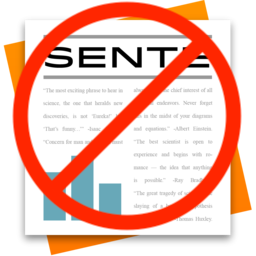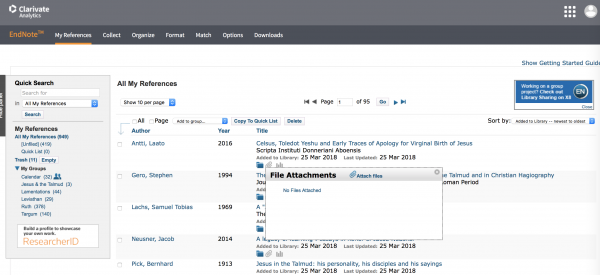Several years ago I wrote about seeking a bibliographic software. I had been using EndNote for years, but I wanted a solution that would allow me to archive and annotate PDFs while also having access to them on the iPad. I chose the “walled garden” of Sente. It was well integrated, had server support, and required little work on my part to keep it up. The latter was in distinction from various other solutions at the time such as Zotero or Mendeley.
As I returned to academic writing this fall I found that Sente was dead in the water. It turns out that, without telling its users!, Third Street software simply ceased to exist. This is frankly immoral behavior. I was truly caught out because I had moved to a new institution and so my database (and all my annotated PDFs) were gone when I erased and turned in my computer to my former school. However, I was fortunate that my collaborator had a copy of the database, including all the PDFs, and was able to export it in XML format.
Now the good news. In the intervening years there has been a LOT of progress. The University of Kentucky has a contract with EndNote (on version 8, now owned or at least marketed by Reuters) so that was my first stop. It now has the support for external files, PDF annotation, and server storage for remote (iPad) access. Why look for another solution? I download both the MacOS and the iOS app and get started.
I have to say, so far I am impressed. Once I figured out how to import the XML file (University of Canterbury has excellent instructions on many EndNote features), all 926 citations were present and accounted for. I am now slowly adding the PDFs. There might be a better way to do that, but so far it is simply a tedious task, no big deal. I have not yet tried to export or integrate with Word (there is a plugin) or NisusWriter. The Mac app does tend to spend time “spinning,” presumably as it is regularly syncing with the server. While uploading a lot of PDFs and doing work tidying up multiple entries, this delay is annoying. I was hoping that once the database is up and running this would only be a minor annoyance, but apparently this is a known problem. Hopefully a fix is in the works.
Given my travel, perhaps the most important part of my day-to-day life is the iOS app. It is not perfect, but it is very nice with good (basic) notation features. The biggest drawback is that it lacks persistence. It does not remember where you were in your reading of a PDF, that is very frustrating. It does have thumbnails on the side allowing for quick scrolling through long documents, so the impact is not that significant.
EndNote is not perfect, but it is as good as Sente ever was. It also has the distinct advantage of being a shipping product that it is still supported and being actively updated.
Sente is dead. Long live EndNote.
UPDATE: The web version of EndNote is excellent! It is integrated into the University of Kentucky Libraries site (and I assume many others) and makes sorting, adding files, and editing very fast indeed. Faster, in fact, than the current Mac OS app. Just to give you a sense of the layout, see the screenshot below. My library and groups are on the left. Here I am showing the popup window for adding file attachments (you can add more than one at a time). One caveat: If you want to read/markup a PDF it will download and launch into your designated PDF viewer. I prefer to read on the iPad anyway (which works very well and quickly) so it is not much of a concern for me, but YMMV.






2 thoughts on “Sente is (long) dead, long live EndNote?”
Similarly caught out by the demise of Sente. Sad to see this and resigned to the mighty Endnote.